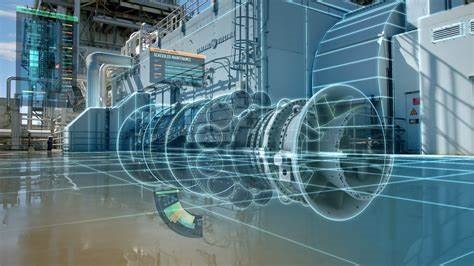Industry 4.0 Technologies – Digital Twin

Nowadays, we see many emerging trends in IETP (Interactive Electronic Technical Publication). One of the recent innovations is the concept of a ‘digital twin’. A digital twin is a virtual representation of something, or an accurate digital counterpart of a physical object or process; the concept originated in 2002, coined by Michael Grieves at the University of Michigan.
The interesting thing about a digital twin is that it can be a replica of anything, such as a jet engine or wind farm – even buildings or cities. The possibilities of this emerging trend are vast, and can be used to bring huge improvement across many types of industry, from transport to manufacturing and even in healthcare.
The global research and advisory company, Gartner, identified digital twins as one of the most important trends in 2018.
How does the ‘Digital Twin’ work?
So how does the digital twin work? It begins with the object that is being studied having sensors attached, which will produce data about the performance of the said object. For example,
- Sensors attached to a wind turbine will give information about the speed that it moves at among other things.
- This data that is collected about the physical object is then relayed and applied to the digital twin, which can mirror its movement exactly.
- Then, when enough data has been collected for the digital copy, it can be used to run simulations and eventually come up with ways in which the original object can be improved.
- These changes can then be applied to the physical object, proving to be a far more cost-effective way of improving a piece of equipment than a trial-and-error approach of modifying the object.
Where is ‘Digital Twin’ technology being used, and how?
This kind of technology can be used to solve a number of issues with equipment due to the fact that it can be used across many industries to bring effective changes in a simple and cost-efficient manner. Some of the key ways in which it has been used so far include:
- Wind turbines, where technology has been used in finding solutions for fatigue testing and corrosion resistance. This makes the turbines more effective long-term.
- The efficiency of racing cars, where an entire race can be simulated prior to the race taking place and the performance of the car monitored to see where improvements can be made.
- Modelling hospitals, where data can be used for organ donation, surgery training de-risk of procedures. This is thought to be one of the key innovations in the smart hospital moving forward.
- In the Oil and Gas Industry, various technologies such as cloud computing, advanced simulation, augmented reality etc. are coming together into an advanced “digital twin” model to improve efficiencies on installations, repairs and maintenance. One company cited a procedure improvement from 24 hours down to a mere 20 minutes.

